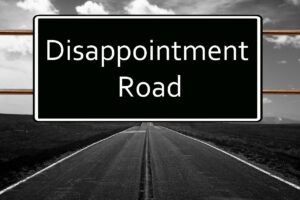I’ve had many conversations about the PR and website traffic connection.
They often sound something like this.
“We had a great PR campaign! Where’s all our site traffic?!!”
This inevitably leads to questions and recriminations:
- Why?
- Something is not working
- Our PR is broken
- We need to switch agencies or strategies
Understanding the PR and SEO Connection
It is a valid question: does great PR move the needle on your website traffic?
It certainly can and should, based on a number factors – including the time window evaluated, the services delivered (PR can span a lot these days), and of course the results achieved.
There are many other things besides media coverage that play a role. For instance, it is critical to SEO your website. Other marketing vehicles can help too, It is not just about media coverage; and some things just take more tme.
Evaluating the Impact
To understand the impact of media coverage, it helps to closely examine the correlation between PR efforts and site traffic. This will shed light on which publications and stories have a higher conversion rates. Then, you can refine your PR tactics accordingly – e.g. double down on those targets and kinds of stories.
The process is straightforward, most PR reporting and monitoring solutions can connect with Google Analytics and provide reports that show the impact of media coverage on site raffic.
Why PR does not Always Convert to Sales or Site Visitors
It is tempting to want to see a spike with every campaign, but this does not always happen. E.g., not every article includes backlinks, or is the kind of article that drives people to search for your site or sign up for a sales call.
There’s also psychology at play, and things that can’t be measured. Someone may read an article mentioning your company and take no immediate action – that is tough to capture in a report.
It is especially true of lesser known brands – people may need to be hit multiple times with articles or other forms of marketing that mention the company before taking any action. This can be due to timing, the nature of the marketing piece, and the fact that repetition helps here.
Some PR tactics, such as thought leadership campaigns, increase brand awareness. Although this may not yield measurable results immediately, it contributes to a company’s success. Strong, recognized brands get lots of site traffic and other great outcomes.
Balancing Short and Long Term
Any good PR program should try to strike a balance between short and long-term goals, and integrate with other aspects of your marketing strategy.
It is important for your team to understand that PR is important, but it isn’t enough on its own. SEO, social media, and PR campaigns should work in tandem.




Agreed, it has to be part of a mix of tools. Curious – is there a best metric you recommend for measuring PR success? I imagine there are multiple, depending on the type of campaign and company.
Thanks for reading and commenting. Yes, there are many metrics to meaure PR success, relating to quantity, quality of coverage, share of voice, etc. The best thing to do is connect PR metrics with other marketing and website analytics to try to determine correlation and attribution.